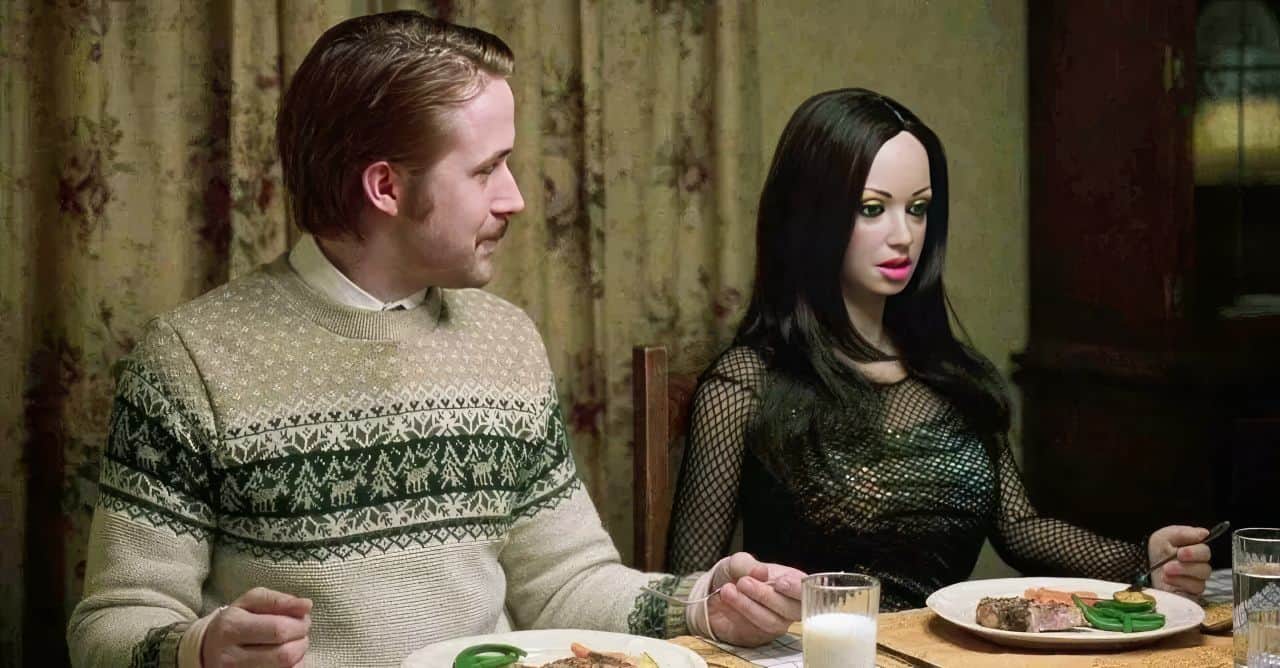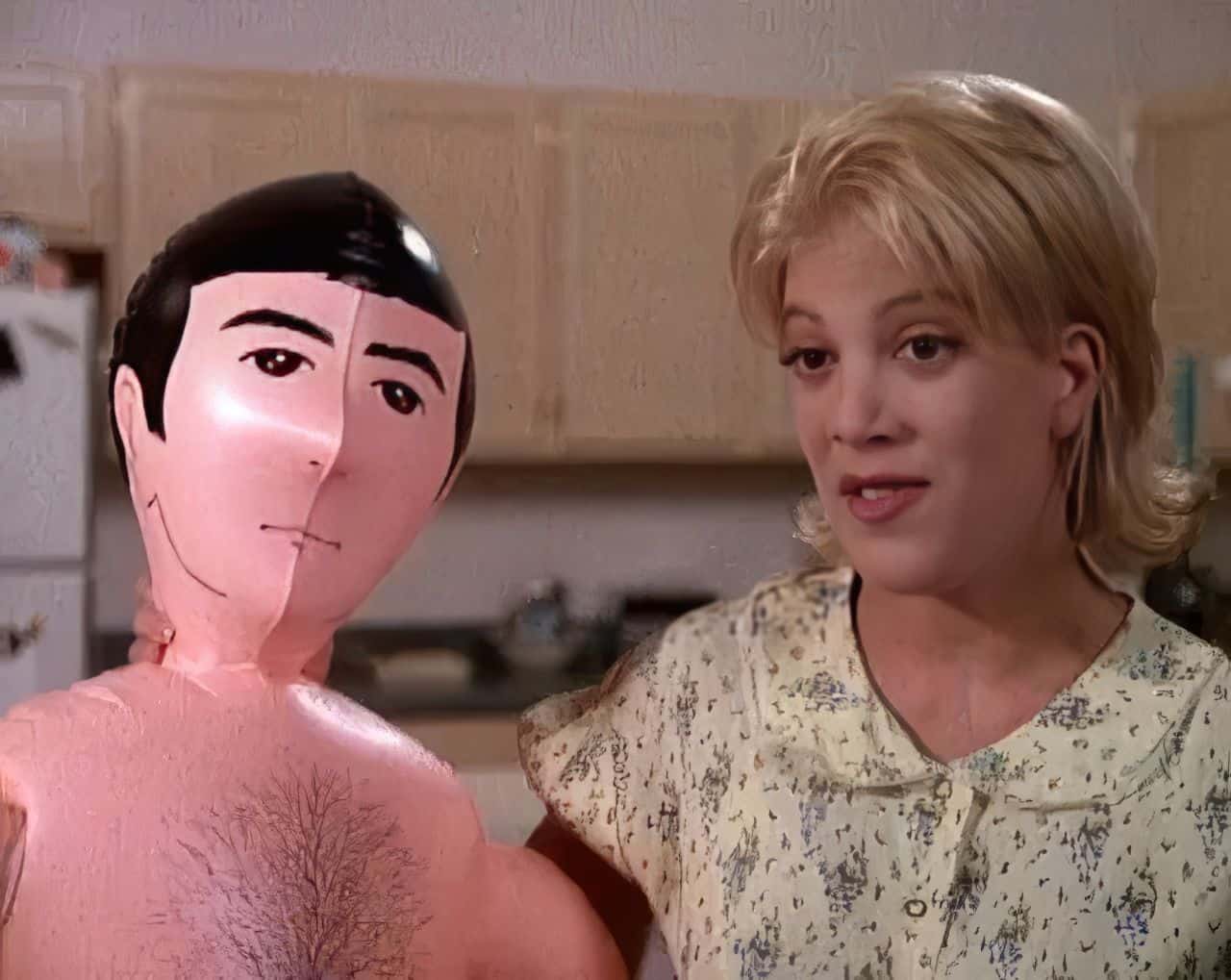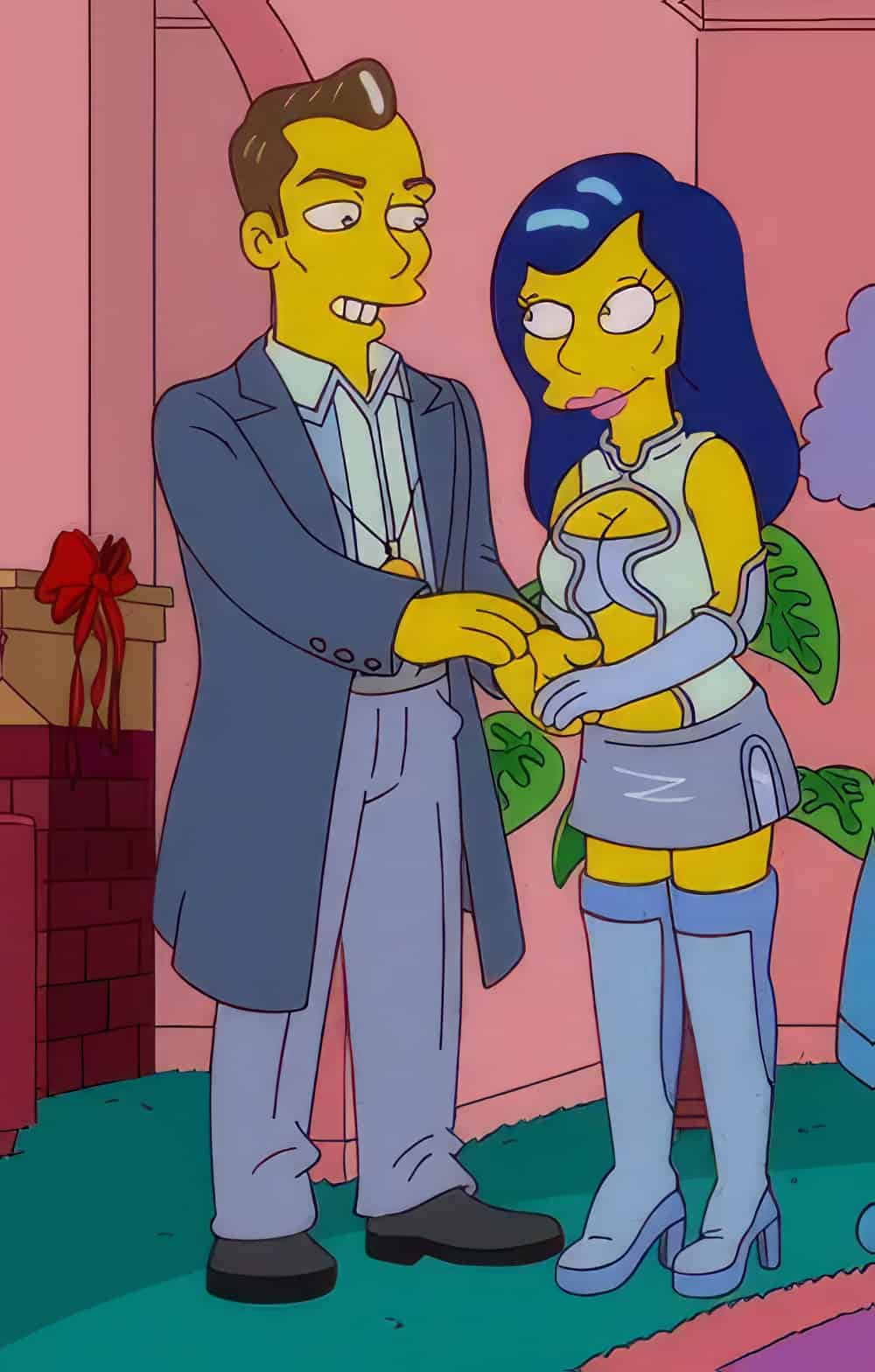Ah, love dolls! We’ve all seen them in one way or another, from classic inflatables in the early days of pop culture to the fine silicone dolls seen everywhere today. Love dolls are everywhere and I’m excited to dive deep into the fascinating world of their representation in movies, TV shows and video games.
Now, let’s get started!
Table of Contents
What are love dolls?
Love dolls (usually referred to as “silicone love dolls” or “fine love dolls”) are human-like figures crafted from cutting-edge materials like silicone, metal or composite parts and even advanced robotic components. It’s not just their physical form that stands out – they can also be programmed with a range of preset AI responses and characteristic traits ranging from high-end models developed for realistic companionship to the more affordable inflated versions created primarily for sexual gratification.

Some popular styles of love dolls include anime love dolls, robotic love dolls, and inflatable love dolls. The anime style is quite popular in Japan and elsewhere due to its cute aesthetic, while the robotic version often includes interactive features like voice recognition technology as well as touch sensors that enable it to react to user input. Inflatable variants on the other hand come in a range of sizes and shapes, with the most common being body pillows created for adult men who are looking for an intimate object of affection. They are also favored by those who don’t want to commit too much money into a doll but enjoy some cuddling or comfort on occasion.
Why are they popular?
Love dolls are growing increasingly popular. Whether it’s the realism of fine silicone love dolls, the convenience of inflatable love dolls, the realistic design of anime love dolls, or the ultra-high tech features of robotic love dolls, these companions offer something special that other toys and robots don’t.
This newfound popularity has many root causes: an increase in disposable income among young adults, acceptance of alternative lifestyle choices, and advancements in technology which allow manufacturers to create ever more lifelike products. But perhaps the largest factor influencing their popularity is the cultural perception; due to their heightened representation in mainstream media—in particular movies and television—love dolls have become part of popular culture.

In TV shows ranging from Sex Education to The Simpsons, movies including Team America: World Police and Lars and the Real Girl to video games such as Grand Theft Auto III and The Witcher 3: Wild Hunt, love dolls appear regularly as comedic tools or as part of a plot device. This widespread exposure has not only normalized them in people’s minds but has also created a powerful form of marketing for makers who wish to attract new customers who may have previously been unaware of the product offerings available.
The impact that this reach into popular culture has had can’t be denied; it’s undeniable that these companions have gone from being mysterious sex toys found only on backstreet websites to becoming mainstream gadgets that many people view simply as a type of toy or collectible item. No matter why someone chooses them, they are now widely considered a viable option – be it as an alternative lifestyle choice or just out of pure curiosity – by those seeking something different.
Representations of Love Dolls in Movies
Love dolls have been used to create a wide range of characters in today’s popular culture, from the creepy and off-putting to the surprisingly relatable and even heroic. From the original Stepford Wives of 1975 to the more recent Little Shop of Horrors remake of 1986, love dolls have been used to create memorable characters and plotlines in many different beloved movies.
Let’s take a look at how love dolls have been represented in movies throughout the ages.
Examples of love dolls in movies

Love dolls have been portrayed in several movies over the years. From comedic takes to horror thrillers, love dolls are an oft-used trope in the film industry. Below are some notable examples of love dolls in movies that may earn a spot in your watchlist.
Romantic comedies: Love dolls get their share of screen time when it comes to romantic comedy movies. These typically feature a human-like life-size doll as a plot point such as ‘Mannequin’ (1987) and its reboot ‘Mannequin Two: On The Move’ (1991) which stars Kim Cattrall and Andrew McCarthy, both about a department store window dresser who falls for his anonymous ‘mannequin’ creation made from real parts, or ‘Just Friends’ (2005), featuring that classic story of high school friends becoming lovers where Ryan Reynolds sees Amy Smart through the eyes of an inflatable love doll that he named ‘Kiki’.
Horror thrillers: Love dolls have also become popular subjects for horror genre flicks–their robotic or plastic shell mixed with their synthetic personas can make them eerily mysterious companions….or creepy villains, depending on how they’re used. From John Carpenter’s ‘Halloween III: Season Of The Witch’ (1982), which features a mad professor creating synthetic masks powered by microchips and robotic technology, or Lars von Trier’s ‘The Kingdom’s two parts’ (1994 & 1997) which utilized medical mannequins as part of a sinister medical conspiracy, love dolls and robots often play villainous roles because they’re uniquely capable of invoking fear and dread into moviegoers – especially if you think about all their possibilities!
Anime styles: More recently, anime style portrayals have been featured prominently in Hollywood films such as ‘Blade Runner 2049’ (2017) starring Ryan Gosling and Harrison Ford wherein viewers get to see Hiroko Watanabe’s prized collection of fine love dolls living amongst Replicants.. Similarly grounded is the neo-noir sci-fi drama ‘Ex Machina’ (2014) wherein Domhnall Gleeson is invited to test out humanoid robots programmed with artificial intelligence…and one particular robot being Ava played by Alicia Vikander whose barely humanoid body resembles those more commonly seen in Japanese anime like Ghost In The Shell or Patlabor 2 – both featuring lifelike figures amongst military mechas.
As these movies demonstrate; even if your vision doesn’t correspond with what we may traditionally consider aesthetically pleasing, Hollywood has continually found creative ways to make use of these works even giving our Vinyl Valentines sympathetic roles from time to time too!
How are they portrayed?
When it comes to love dolls, their representation in popular culture is often split between two extremes – either heartless objects of titillation and lewdness, or fully realized characters with complex stories of their own. The truth is that in most cases it’s somewhere in between. Movies, TV shows, and video games featuring love dolls often explore themes of objectification, love and resentment, technology vs. humanity, and sexuality.
In horror movies such as Curse of Chucky (2013) and Dead Silence (2007), the presence of a love doll serves as a reminder that objects can be imbued with life – or death – when used by wicked forces. Meanwhile in comedy-horror films like Little Shop of Horrors (1986) or romantic dramas such as Lars and the Real Girl (2007), there may be an element of awkwardness but ultimately dolls become much-loved family members.
Silicone fantasy loves dolls may also appear within paranormal tech-driven storylines like Westworld (2016) or Ex Machina (2014). In these instances the question arises: Are they sentient beings worthy of respect and understanding? As artificial intelligence advances are made every year so does our curiosity about how far these technologies can go; just how intelligent can robots be?
Outside horror, science fiction, comedy-drama or pure fantasy tales can also bring us into contact with robots or other forms of automated figures – for example anime love dolls may appear as stand-ins for real-life humans within larger stories involving fantasy settings such as the acclaimed Your Name (2016). These examples serve to remind us that although unrealistically life-like creations exist it’s still possible to feel emotions towards them even if they aren’t alive like we are. We must never forget that beneath all its gadgetry a mechanical construct remains only an elaborate machine created by mankind – but if given enough time love will inevitably transcend even that barrier!
Representations of Love Dolls in Television
Love dolls are everywhere these days. From the cartoons we watch, to the movies we love, to the video games we play, they’re popping up just about everywhere.
What do we think when we see love dolls on TV? Is it just a comedic punchline? Or is there a deeper message the writers are trying to convey? Let’s take a look at some of the ways love dolls have been represented on television.
Examples of love dolls in television
Love dolls have appeared in television programs and movies as sources of comedy, satire, and examples of unusual relationships. The representations range from fully functioning humanoids to objects that are purely a source of comic relief. Here are some notable examples of love dolls being used on the small screen:

The Simpsons – In 2003, an episode titled ‘large marge’ featured Lovebot 3000, a robotic doll that made its way into the lives of the Simpson family. It soon becomes apparent that Lovebot 3000 is actually a love doll whose purpose is to satisfy sexual urges.
Friends – In the season seven episode “The One with Ross’s Tan”, Ross purchases an inflatable love doll named “Twitchelle” as a roommate replacement while Rachel is away on vacation.
Seinfeld – In “The Summer Of George” episode (season 8), Jerry purchases an anatomically correct male love doll named Tippy as a last ditch effort to keep his girlfriend amused while he takes time off from work. Unfortunately, Tippy soon proves himself to be less than satisfactory and Jerry has to quickly get rid of him.
South Park – The 2001 episode “Scott Tenorman Must Die” features Cartman buying what he believes is a ginger-haired boy love doll for $100 from Stan’s uncle Jimbo and his friend Ned in order to carry out his plan for revenge against Scott Tenorman. Unfortunately for Cartman, he soon discovers that it was actually just a bag full of pubic hair!
How are they portrayed?
It’s no secret that love dolls have been in the popular imagination for ages. You can find them making appearances in all kinds of different mediums, from creepy horror stories to light-hearted comedy. But one thing remains the same: Love dolls are usually presented as objects to be feared and avoided, or strictly used for entertainment purposes.
In movies and television shows, it’s common to see a love doll portrayed as either an overly sexual animated object (think Austin Powers’ Fembot) or a creepy mannequin that invokes feelings of unease. In other cases, they are also used as comedic devices, typically such that their presence highlights someone’s awkwardness or stupidity.
In terms of their representation within video games, it’s likely you’ve most likely encountered non-playable characters with designs inspired by an anime love doll. This could be anything from an immovable shopkeeper behind a store shelf who entertains you with a hilarious quip upon buying something to a robotic companion with some questionable morality which helps your character explore the game world further. Of course, there are always exceptions where the portrayal is far more evenhanded but these are few and far between as compared to all the others.
Regardless of how they’re portrayed across media, one thing remains true: these lovable mechanical creations remain fixtures which represent our most creative imaginations—in all its forms!
Representations of Love Dolls in Video Games
From ultra-realistic silicone love dolls to cute anime love dolls, the representation of love dolls in video games has reached an impressive level. Whether they are inflatable or robotic, the industry of fine love dolls has managed to find their way into video games, emerging in a vast array of genres and storylines.
In this article, I’m going to delve into the various representation of love dolls in video games.
Examples of love dolls in video games
Video games are a fantastic medium for storytelling – they are interactive and can be used to explore any genre, theme, or topic imaginable. Love dolls have been popping up in video games as early as the ’90s, but in recent years they have become much more popular and integrated into many different genres.
One of the earliest examples of a love doll in a video game was the Mannequin Doll from The Legend of Zelda: Ocarina of Time. In this classic Nintendo game, players could find and purchase the mannequin doll for a small fee at one of the village shops. It was used as an item to bring companions home after battles or complete other tasks assigned by NPCs within the game – you could even dress it up in different costumes from Hyrule’s Kokiri Village!
The love dolls have also made appearances in the Resident Evil series since its inception. In Resident Evil 4, Leon S Kennedy has to rescue a woman held against her will by Spanish cult Los Illuminados – who use animatronic dolls to help supplement their army and distract Leon from finding his target. Similarly, Resident Evil 7 features robotic love dolls that are pitted against protagonist Ethan Winters throughout his daunting journey through an old plantation house filled with monsters hell-bent on killing him.
Love dolls also appear heavily throughout later entries in the Yakuza series – most notably Yakuza 5 released exclusively on PlayStation 3 where massive mech battle suits yhat look suspiciously like giant love doll–helmed by characters such as Haruka Sawamura–can be inhabited following completion of specific missions during Chapter 6: Dreams Like Crimson Waves. They often provide comic relief when fighting hordes of gangsters or entirely new threats hidden within Tokyo’s red light district Kabukicho.
As far as virtual worlds go, Japanese social MMO LovePlus+ is certainly one way to experience simulated relationships with your very own customisable companion – whose face can be changed using photographs! Additionally, players can customize their robots using myriad accessories that range from Hello Kitty contact lenses to costumes inspired by your favorite anime or even historical figures like Napoleon Bonaparte himself!
How are they portrayed?
Ever since their invention, love dolls have had their fair share of representation in video games. One of the most popular video game series featuring love dolls is Nekopara. Produced by online game developer NEKO WORKs, this game first appeared in 2014 and focuses on the adventures of cats that turn into human-like beings when they touch the cat paw stone presented to them by their master, Kashou Minaduki. As these cats explore a world populated with humans and discover secrets along the way, they form relationships and even sometimes fall in love with one another.
Love dolls also feature prominently in Japanese dating sims like Summer Lesson, where players take on the role of a teacher interacting with a realistic AI-controlled anime-style doll during what’s supposed to be a summer of courtship.
In general, love dolls are often used as satirical objects for comedic relief in video games. They are sometimes portrayed as stereotypical sex objects designed for male pleasure or as robot servants that perform household chores for their owners; both representations often feed into existing gender stereotypes about women’s roles in society.
While this could be seen as potentially reinforcing misogyny and objectifying women who play or design these games, other titles such as In The Fading Light portray realistic female characters loyal to their loved ones and use AI technology to emphasize themes like loss, longing, connection and intimacy between characters who have otherwise been isolated from each other due to societal conventions or technological boundaries.
Conclusion
As we’ve seen, love dolls have become increasingly popular in recent years and have been featured in various media. From the darkly humorous themes of the show Westworld to the campy comedy of the movie Ted to the more serious exploration of the potential of technology in Blade Runner, there’s no doubt that love dolls have made quite an impression on pop culture.

In this article, I’ve taken a look at how love dolls are represented in movies, TV shows and video games and attempted to analyze the implications of their portrayals. It’s clear that love dolls are here to stay, but it remains to be seen how they will be received in the years to come.
Summary of love dolls in pop culture
Love dolls have become an increasingly popular topic in pop culture. From movies to TV shows, video games and even manga, these love dolls have certainly been talked about quite a bit in the media. Movies like Lars and the Real Girl and Rubber present love dolls as something that is adorable, quirky and even a bit romantic. TV shows such as Black Mirror showcase a darker view on love dolls with episodes like “Hated in the Nation” that raise questions about the ethical implications of using them. Video games such as Yume Nikki and LittleBigPlanet also use love dolls as a major plot device – or just for fun!
Love dolls come in many forms; from silicone to inflatable, anime-style to robotic, they all have different levels of sophistication and capabilities. Regardless of the type you choose, it’s clear that society loves them – after all, they were invented over 30 years ago, yet continue to be featured prominently in works of fiction today. Love dolls are now considered mainstream enough that there are conventions dedicated to them around the world – showing just how far they’ve come!
Final thoughts on their representation
As we have seen, love dolls are a complex subject and can elicit both positive and negative reactions from people all over the world. In the past few decades, their representation in movies, TV shows, and video games has gradually improved from negative to neutral or even positive. This is a great step forward for those pushing for more healthy, realistic and non-stereotypical portrayals of this topic in popular culture. While there is still much work to be done in terms of representation, I think that the progress over the last few years gives us hope for an even better future.
At the same time, it is important that we approach these types of stories with empathy and understanding instead of reckless judgment or generalizations. Every person’s experience with love dolls (whether good or bad) is personal and our opinions should be formed not according to stereotypical portrayals but on individual perspectives. So let’s celebrate the progress we have made while looking ahead at how far we can take it!
Frequently Asked Questions
What are love dolls?
Love dolls are dolls designed to look and feel like a real person, usually featuring lifelike facial features, hair, and sometimes even skin. They come in a variety of materials and styles, from inflatable dolls to silicone and robotic dolls.
What are some examples of love dolls in pop culture?
Love dolls have been featured in a number of movies, TV shows, and video games. For example, in the movie Blade Runner 2049, love dolls play an integral role in the story. On the TV show Black Mirror, love dolls are used as a form of therapy. And in the video game Fallout 4, a certain type of love doll is a quest item.
Are love dolls expensive?
Love dolls can range in price from a few hundred dollars to several thousand, depending on the quality and features. Inexpensive inflatable dolls are usually the cheapest option, while more realistic silicone and robotic dolls tend to be more expensive. Personally, I think that the ones from Tantaly are the very value for the money.
